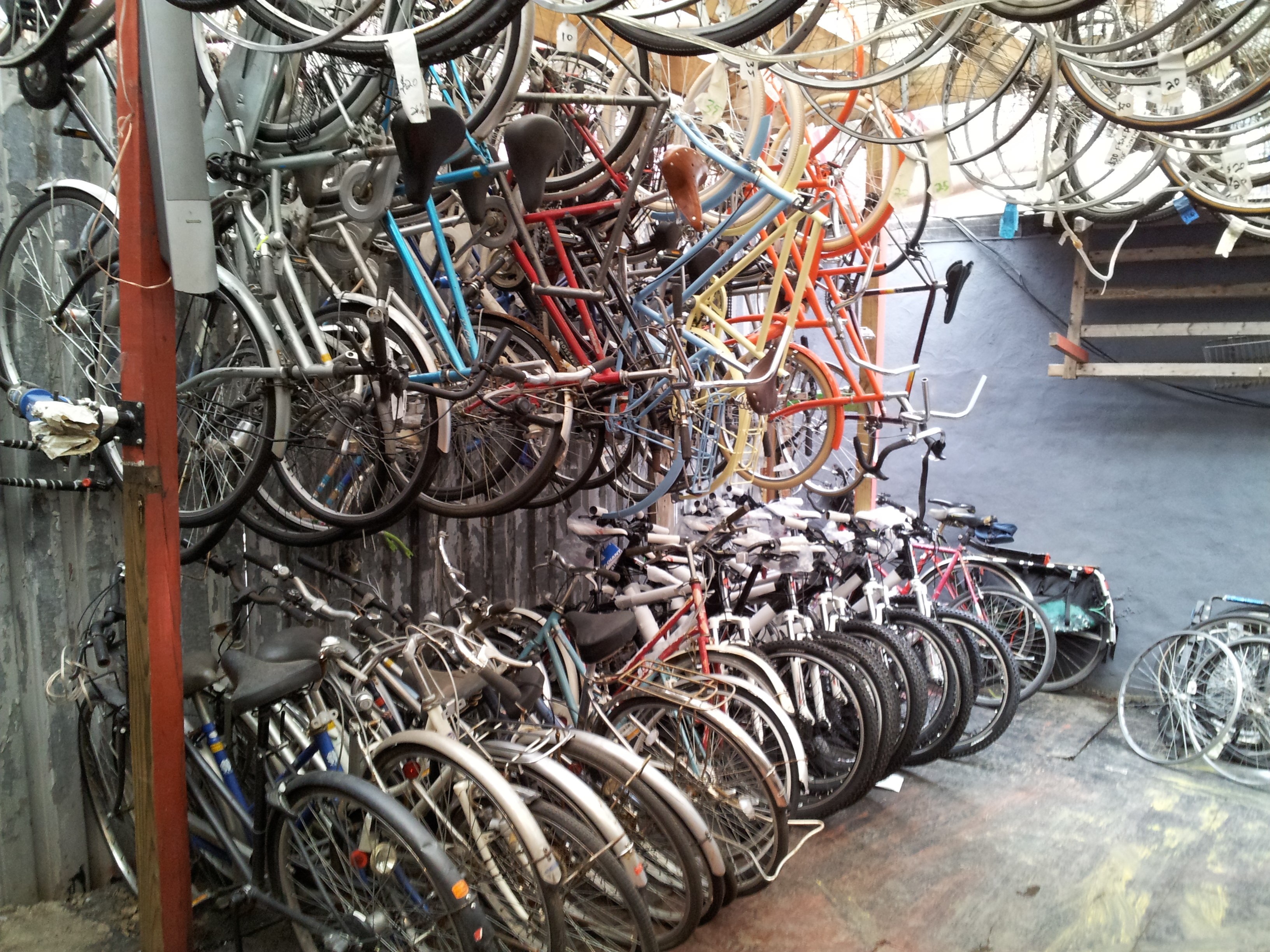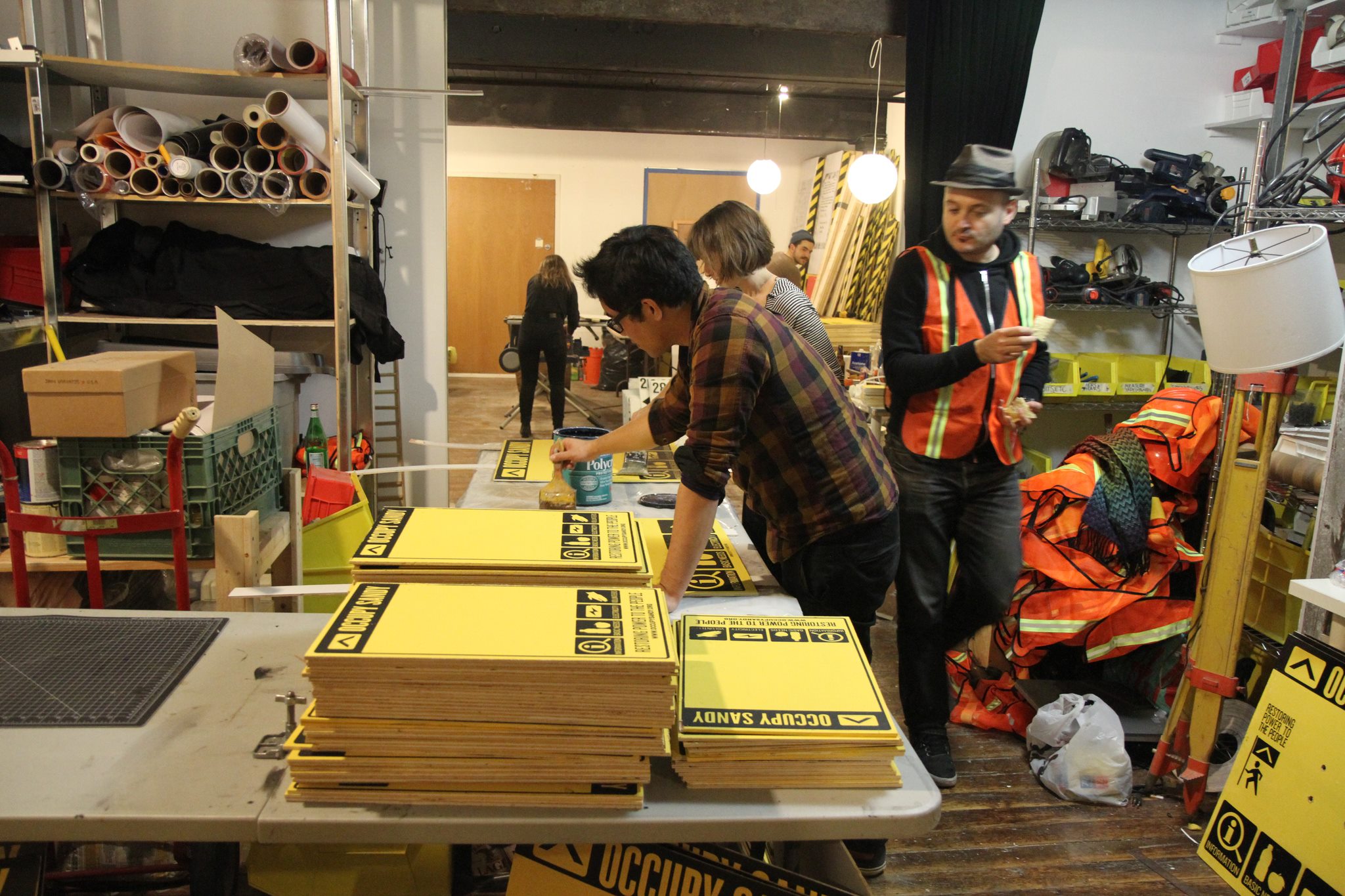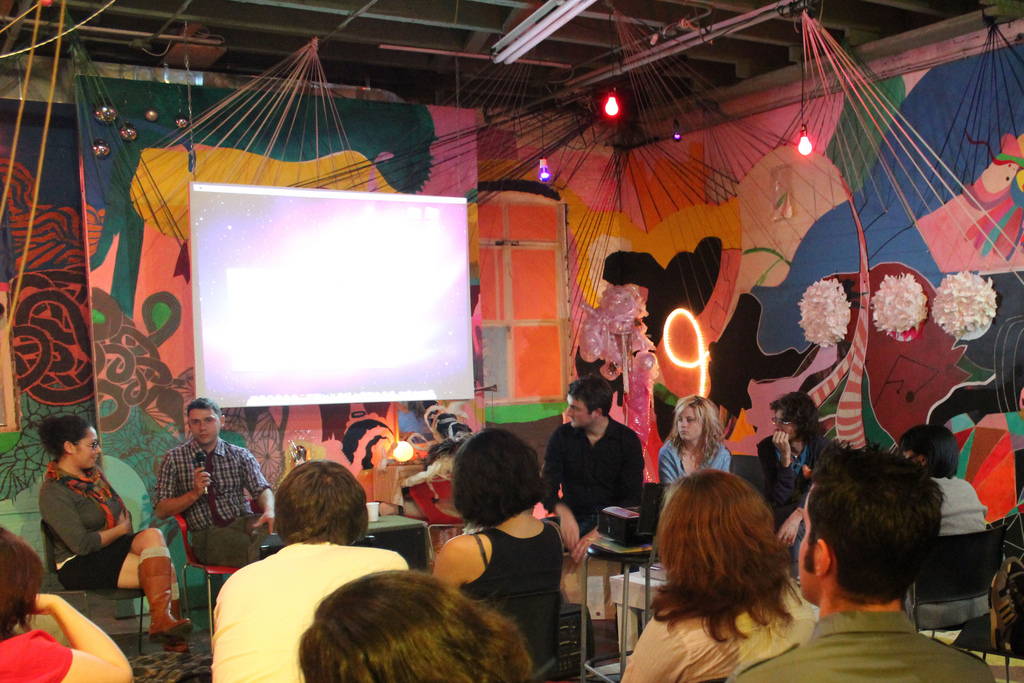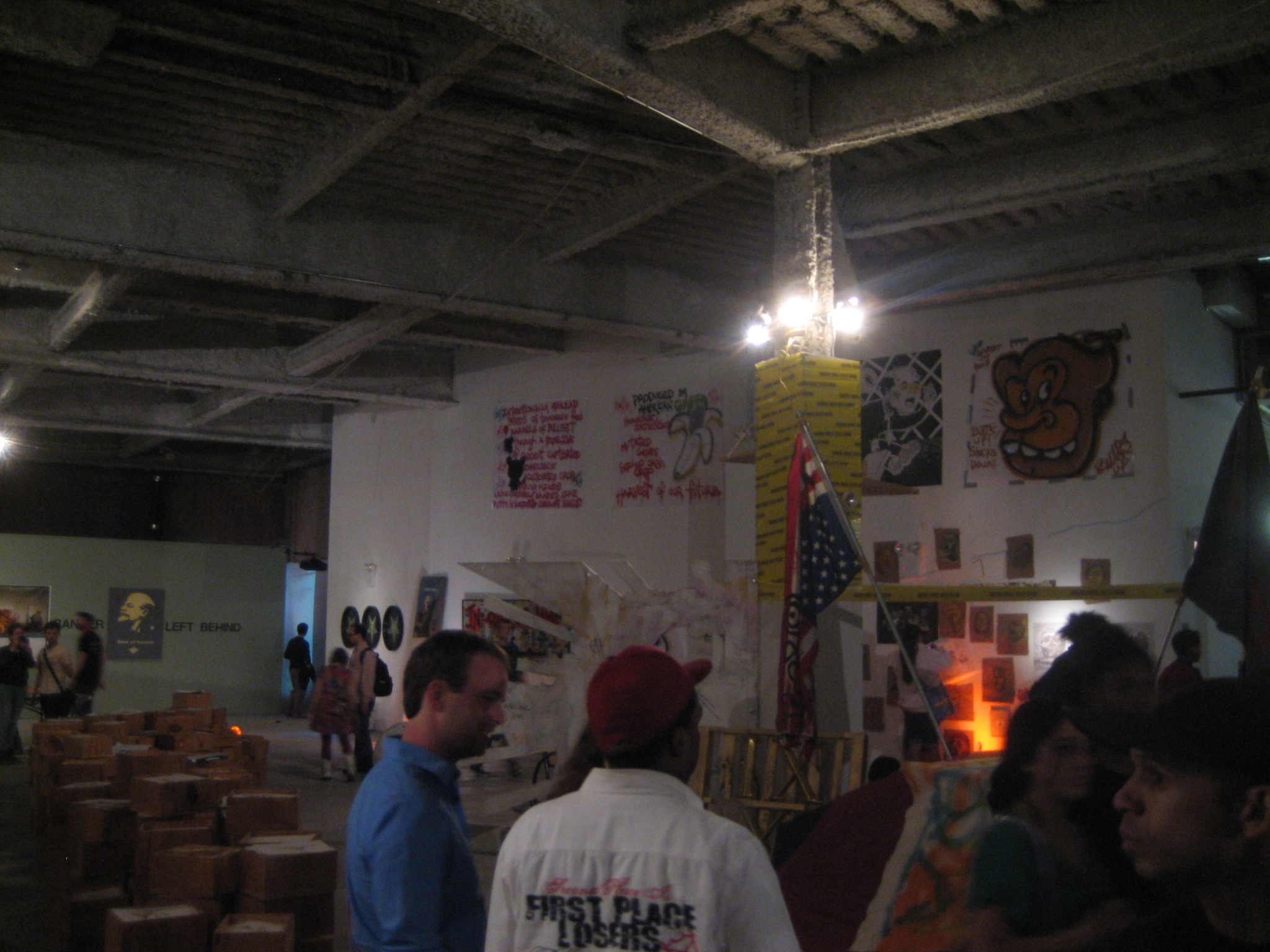time’s up
neighborhood: williamsburg | space type: community space, skillshare, activism | active since: 1987 | links: website, wikipedia, facebook, twitter, flickr
Environmental-activism nonprofit Time’s Up is actually one of the very first spaces I profiled when I started this project. (Read the original post here!) But that was two whole years ago, and more importantly, I just got a new (used) bike of my own from these guys, so I wanted to remind everybody how wonderful they are. They’ve also got all sorts of new initiatives and fun things in the works, so it seemed like a great time to revisit.
Time’s Up is a volunteer-run direct-action environmental group. Their most visible project is the bike co-op, which does three main things: 1) acquires, refurbishes, and sets people up with terrific, city-friendly used bikes (like mine!) for a donation of about $200; 2) leads bike repair workshops, teaching you how to fix all the different parts of your bike, including one class per week that’s for women and trans only; and 3) opens their doors three nights a week to anyone who wants to use their vast array of tools and talk to their incredibly knowledgeable mechanics while working on your own bike. (Check their calendar for dates and times.) They also hold lots of group bike rides and work on campaigns to support causes like anti-fracking, alternative energy, and safer streets, and they’re working to turn the space into a community gathering spot, with new plans like a bi-weekly movie night.
Read on for my Q&A with Keegan, one of the bottom-liners of the bike co-op and the guy who sold me my fabulous new bike!
brooklyn spaces: How would you define the Time’s Up mission?
Keegan: At heart we’re an environmental group, and because we’re in New York City, that means trying to find sustainable ways to live in an urban environment. Bike activism is a big part of it, because bicycling is sustainable transportation, and we want to make it so that everyone feels comfortable biking in the city. That means creating safe spaces, like bike lanes, but there’s always going to be a place where the bike lane ends, so we really need the streets to be safer in general. The NYPD needs to be ticketing motorists, and when cyclists and pedestrians are killed, they need to be doing proper investigations. We’re having a ride to advocate for this on March 21—everyone should come join us!
brooklyn spaces: Where do you get the bikes you refurbish?
Keegan: We buy them in bulk, these Dutch-style Japanese bikes called mamacharis, which means “mother chariot.” They’re terrific city-friendly bikes. They’re upright, with full fenders so you can ride them in any weather, and really good brakes so they’re safe. Basically everybody rides mamacharis in Japan, they’re hugely popular. The government actually tried to ban them, because they thought it was too dangerous for women to be riding with a child on the front and a child on the back and all the groceries too. But the women of Japan rose up to defend their bicycles, and they won, the mamachari didn’t get banned.
brooklyn spaces: Tell me about some of the group rides you guys do.
Keegan: We have a monthly moonlight ride through Central Park and another in Prospect Park, there’s a Peace Ride that goes through various peace sites in Lower Manhattan, and we have some goofy theatrical rides, which are also direct actions, like we dress up as clowns and call ourselves the Bike Lane Liberation Front. We crash into the back of cars, like “Oh hey, what are you doing in this bike lane?” and give out fake tickets, stuff like that.
brooklyn spaces: Are you guys part of Critical Mass?
Keegan: Critical Mass is leaderless and worldwide, but we used to help facilitate it in New York a lot, often just by showing up. Sadly, that ride has gotten smaller and smaller due to a massive police crackdown. It’s the same reason they shut down Occupy Wall Street: they don’t want to look like they’re allowing a political demonstration. This last month there were four riders and fourteen police vehicles! So now we do First Friday rides instead—those get forty or fifty people and zero police.
brooklyn spaces: How many people are involved in Time’s Up?
Keegan: Our volunteer base is pretty huge, we have about fifteen hundred people. It’s a big, amorphous, fun group. It’s also very much a community.
brooklyn spaces: Do people come here and say “I have a wacky bike idea, can you help?”
Keegan: Oh yeah, ever since Occupy Wall Street, when we built energy-generating bikes to offset the gas generators in Zucotti Park.
brooklyn spaces: You guys used those after Sandy too, right?
Keegan: Yeah, although the bikes that were in Zuccotti were taken by the NYPD and mostly broken. We had three up and running when Sandy hit, and we deployed them right away, on the Lower East Side. When the LES got power back we took them to the Rockaways. We were also doing group rides out there three times a week, delivering goods. Through Occupy Sandy, we got funding to build fifteen more energy bikes, and some of them are still in the Rockaways. The People’s Free Medical Clinic is using two of them instead of getting hooked back up to the grid.
brooklyn spaces: How did Time’s Up end up in Williamsburg?
Keegan: We used to be at 49 East Houston St., and we got kicked out of there when the owner sold it to a developer. We were scrounging around for space and we did a direct action in Williamsburg when the Bedford Ave bike lane was taken out, a mock funeral for the lane. We got quite a bit of press for that, and the landlord here, Baruch Herzfeld, who’s a pretty dramatic and funny bike advocate himself, really liked what we were doing. This space was actually previously a bike shop, and he let us move in and take it over.
brooklyn spaces: Do you feel that being in Williamsburg has had an affect on the space, the mission, the way it’s run, that sort of thing?
Keegan: Definitely. Being here dictated so much of what we did for the first couple of years, because we’re right on the borderline between Chasidic Williamsburg and hipster Williamsburg. When we opened the co-op, we had a shocking number of Chasidic people coming in to fix their bikes, both men and women. It’s really interesting to see them come here and work alongside a bunch of hipsters who obviously have very different values, and then they find out that they’re really not so different: they all want to work on their bikes, they all want to live cheaply and sustainably.
brooklyn spaces: Tell me a nice fond memory you have from your time here.
Keegan: It’s all pretty good. After every single workshop I’m like, “Wow, that was great!” I just helped this guy fix his bike who does the programming for the tiny theatre down the block, Spectacle. I also got to help a woman who had been hit by a car. It’s just so much great community building; we all become friends by the end of the night. Every workshop is a terrific experience.
***
Like this? Read more about community spaces: No-Space, Trees Not Trash, Bushwick City Farms, Brooklyn Free Store, The Illuminator, Occupy Wall Street art show, Books Through Bars




























































